After spending billions of dollars a year on corporate learning, U.S. companies probably assume that their employees have the knowledge and skills they need to carry out their jobs. The employees themselves probably think they’re prepared, too, having gone through these exercises.
But according to data from industries including academia, health care, technology, manufacturing, retail, sports, and business services, people are actually “unconsciously incompetent” in a typical 20% to 40% of areas critical to their performance.
Unconscious incompetence can be found at every function, discipline, and level in organizations. In fact, it’s often more prominent among experienced staff, which is particularly problematic because, as the go-to people in their circles, they often pass incorrect or incomplete information and skills on to others via to peer-to-peer learning and training. This can lead to significant mistakes, dissatisfied customers and even damaged corporate reputations.
But how does a company, manager or individual employee correct a competency gap about which no one is aware? As a physician who studies brain function, biological variation and how people learn, I have some suggestions. The first step is to get “unconscious incompetence” on the learning agenda.
Corporate training programs need to be redesigned to better engage learners and empower them to admit what they don’t know. Too many online training modules miss the mark here because they rely on static content, which most people try to click through as quickly as possible, especially if they think they already know it. These programs also make assumptions about what students understand and where they need reinforcement, offering a “one-size-fits-all” approach that’s highly ineffective since every learner is different, with variations in knowledge, experiences, background and the ability to take in new information, even from moment to moment.
Better learning models are instead adaptive—that is, molded to each person’s needs by probing what they know and don’t know, then offering tailored content as the learner performs well or struggles. When e-learning is individualized in this way, learners can still speed through material, but only that which they’ve already mastered. And when they reach anything that challenges them, they get more support. Education technology companies and publishers are working hard to build these kinds of systems, as are industry groups, particularly in the healthcare arena. The American Medical Association recently announced a partnership initiative to encourage innovation and flexibility in continuing education, using blended or new approaches. And our work with the New England Journal of Medicine (NEJM Group) to create courses that allow physicians to maintain certification and keep up to date in a constantly evolving field is similar.
When being tested, learners should also be pushed to rate the confidence of their answers. Consider, for example, a trainee who scores 40 out of 50 on a proficiency test. Her trainer should make sure she focuses not just on the 10 misses, but also any correct answers that she can admit were lucky guesses. I’ve actually started to use this approach when helping my two daughters practice their spelling words. With every answer, they have to put three fingers up if they are sure, two fingers up if they’re only partly sure, and a thumbs-down if they’re just giving it a shot. Now, they’re much more conscious about when they’re guessing, and more apt to review all the words on which they felt at all unsure. When corporate learning programs prompt employees to admit to that they’re guessing in the same way, they, too, begin to see the previously hidden gaps in their skills and knowledge.
Another strategy is to promote a culture of continuous improvement. A great example comes from the aviation industry. Pilots are trained in the latest aircraft and procedures using simulators, which test their skills and abilities, and uncover unconscious incompetence. In addition, airlines and the Federal Aviation Administration (FAA) use information from “near-miss” data (incidents or errors that nearly cause an accident) to inform training. The result is “predictive safety” that relies heavily on the reporting of these mistakes. The objective is not to punish (in fact, a lack of near-miss data is seen as questionable), but to improve safety and performance. More companies should keep formal or informal records of—and openly discuss—errors, whether in production, customer service, or other areas because they can yield invaluable insights about employees’ knowledge gaps and make everyone more aware of what they don’t know. The goal is to make people more comfortable about acknowledging previous mistakes and any doubts they may have going forward about trying to do their job. Emphasize that saying “I don’t know” is always better than pretending to know something.
Unconscious incompetence is a pervasive and escalating problem, especially in fast-paced industries where knowledge and skills need constant updating. Organizations can only address it with more adaptive, individualized corporate learning programs and by promoting a culture of continues improvement. With a mindful approach that allows learners to probe their knowledge, uncover what they don’t know, and admit when they are unclear, incompetence is uncovered and, thus, no longer unconscious: Employees know what they don’t know and their employers can do something about it.









